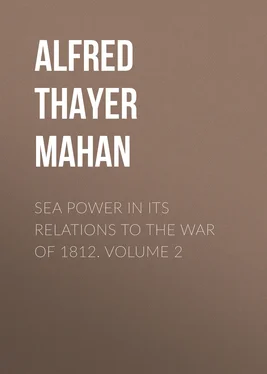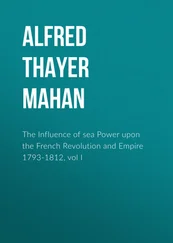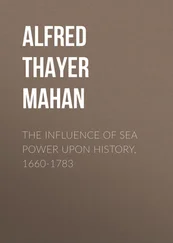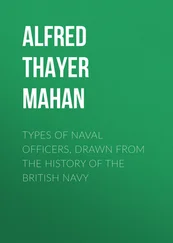Alfred Thayer Mahan - Sea Power in its Relations to the War of 1812. Volume 2
Здесь есть возможность читать онлайн «Alfred Thayer Mahan - Sea Power in its Relations to the War of 1812. Volume 2» — ознакомительный отрывок электронной книги совершенно бесплатно, а после прочтения отрывка купить полную версию. В некоторых случаях можно слушать аудио, скачать через торрент в формате fb2 и присутствует краткое содержание. Жанр: foreign_prose, История, foreign_edu, foreign_antique, на английском языке. Описание произведения, (предисловие) а так же отзывы посетителей доступны на портале библиотеки ЛибКат.
- Название:Sea Power in its Relations to the War of 1812. Volume 2
- Автор:
- Жанр:
- Год:неизвестен
- ISBN:нет данных
- Рейтинг книги:5 / 5. Голосов: 1
-
Избранное:Добавить в избранное
- Отзывы:
-
Ваша оценка:
- 100
- 1
- 2
- 3
- 4
- 5
Sea Power in its Relations to the War of 1812. Volume 2: краткое содержание, описание и аннотация
Предлагаем к чтению аннотацию, описание, краткое содержание или предисловие (зависит от того, что написал сам автор книги «Sea Power in its Relations to the War of 1812. Volume 2»). Если вы не нашли необходимую информацию о книге — напишите в комментариях, мы постараемся отыскать её.
Sea Power in its Relations to the War of 1812. Volume 2 — читать онлайн ознакомительный отрывок
Ниже представлен текст книги, разбитый по страницам. Система сохранения места последней прочитанной страницы, позволяет с удобством читать онлайн бесплатно книгу «Sea Power in its Relations to the War of 1812. Volume 2», без необходимости каждый раз заново искать на чём Вы остановились. Поставьте закладку, и сможете в любой момент перейти на страницу, на которой закончили чтение.
Интервал:
Закладка:
Barclay, finding the wind to head him and place him to leeward, arranged his fleet to await attack in the following order, from van to rear: The schooner "Chippewa," "Detroit," "Hunter," "Queen Charlotte," "Lady Prevost," "Little Belt." 86 86 There was a question whether the "Hunter" was ahead or astern of the "Queen Charlotte." In the author's opinion the balance of evidence is as stated in the text. Perry rearranged his line with reference to the British, upon seeing their array. Had the "Charlotte" been next the "Detroit," as James puts her, it seems probable he would have placed the "Niagara" next the "Lawrence."
This, he said in his official letter, was "according to a given plan, so that each ship [that is, the "Detroit" and "Queen Charlotte"] might be supported against the superior force of the two brigs opposed to them." The British vessels lay in column, in each other's wake, by the wind on the port tack, hove-to (stopped) with a topsail to the mast, heading to the southwest (position 1). Perry now modified some details of his disposition. It had been expected that the "Queen Charlotte" would precede the "Detroit," and the American commander had therefore placed the "Niagara" leading, as designated to fight the "Charlotte," the "Lawrence" following the "Niagara." This order was now reversed, and the "Caledonia" interposed between the two; the succession being "Lawrence," "Caledonia," "Niagara." Having more schooners than the enemy, he placed in the van two of the best, the "Scorpion" and the "Ariel"; the other four behind the "Niagara." His centre, therefore, the "Lawrence," "Caledonia," and "Niagara," were opposed to the "Detroit," "Hunter," and "Queen Charlotte." The long guns of the "Ariel," "Scorpion," and "Caledonia" supplied in measure the deficiency of gun power in the "Lawrence," while standing down outside of carronade range; the "Caledonia," with the rear schooners, giving a like support to the "Niagara." The "Ariel," and perhaps also the "Scorpion," was ordered to keep a little to windward of the "Lawrence." This was a not uncommon use of van vessels, making more hazardous any attempt of the opponent to tack and pass to windward, in order to gain the weather gage with its particular advantages (position 1).
The rear four schooners, as is frequently the case in long columns, were straggling somewhat at the time the signal to bear down was made; and they had difficulty in getting into action, being compelled to resort to the sweeps because the wind was light. It is not uncommon to see small vessels with low sails thus retarded, while larger are being urged forward by their lofty light canvas. The line otherwise having been formed, Perry stood down without regard to them. At quarter before noon the "Detroit" opened upon the "Lawrence" with her long guns. Ten minutes later the Americans began to reply. Finding the British fire at this range more destructive than he had anticipated, Perry made more sail upon the Lawrence. Word had already been passed by hail of trumpet to close up in the line, and for each vessel to come into action against her opponent, before designated. The "Lawrence" continued thus to approach obliquely, using her own long twelves, and backed by the long guns of the vessels ahead and astern, till she was within "canister range," apparently about two hundred and fifty yards, when she turned her side to the wind on the weather quarter of the "Detroit," bringing her carronade battery to bear (position 2). This distance was greater than desirable for carronades; but with a very light breeze, little more than two miles an hour, there was a limit to the time during which it was prudent to allow an opponent's raking fire to play, unaffected in aim by any reply. Moreover, much of her rigging was already shot away, and she was becoming unmanageable. The battle was thus joined by the commander-in-chief; but, while supported to his satisfaction by the "Scorpion" and "Ariel" ahead, and "Caledonia" astern, with their long guns, the "Niagara" did not come up, and her carronades failed to do their share. The captain of her opponent, the "Queen Charlotte," finding that his own carronades would not reach her, made sail ahead, passed the "Hunter," and brought his battery to the support of the "Detroit" in her contest with the "Lawrence" (Q 2). Perry's vessel thus found herself under the combined fire of the "Detroit," "Queen Charlotte," and in some measure of the "Hunter"; the armament of the last, however, was too trivial to count for much.
Elliott's first placing of the "Niagara" may, or may not, have been judicious as regards his particular opponent. The "Queen Charlotte's" twenty-fours would not reach him; and it may be quite proper to take a range where your own guns can tell and your enemy's cannot. Circumstance must determine. The precaution applicable in a naval duel may cease to be so when friends are in need of assistance; and when the British captain, seeing how the case stood, properly and promptly carried his ship forward to support his commander, concentrating two vessels upon Perry's one, the situation was entirely changed. The plea set up by Cooper, who fought Elliott's battle conscientiously, but with characteristic bitterness as well as shrewdness, that the "Niagara's" position, assigned in the line behind the "Caledonia," could not properly be left without signal, practically surrenders the case. It is applying the dry-rot system of fleet tactics in the middle of the eighteenth century to the days after Rodney and Nelson, and is further effectually disposed of by the consentient statement of several of the American captains, that their commander's dispositions were made with reference to the enemy's order; that is, that he assigned a special enemy's ship to a special American, and particularly the "Detroit" to the "Lawrence," and the "Queen Charlotte" to the "Niagara." The vessels of both fleets being so heterogeneous, it was not wise to act as with units nearly homogeneous, by laying down an order, the governing principle of which was mutual support by a line based upon its own intrinsic qualities. The considerations dictating Perry's dispositions were external to his fleet, not internal; in the enemy's order, not in his own. This was emphasized by his changing the previously arranged stations of the "Lawrence" and the "Niagara," when he saw Barclay's line. Lastly, he re-enforced all this by quoting to his subordinates Nelson's words, that no captain could go very far wrong who placed his vessel close alongside those of the enemy.
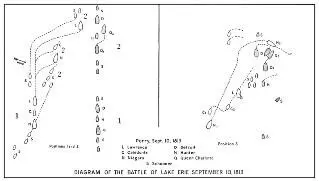
DIAGRAM OF THE BATTLE OF LAKE ERIE SEPTEMBER 10, 1813
Cooper, the ablest of Elliott's champions, has insisted so strongly upon the obligation of keeping the station in the line , as laid down, that it is necessary to examine the facts in the particular case. He rests the certainty of his contention on general principles, then long exploded, and further upon a sentence in Perry's charges, preferred in 1818, that "the commanding officer [Perry] issued, 1st, an order directing in what manner the line of battle should be formed … and enjoined upon the commanders to preserve their stations in the line" thus laid down. 87 87 Cooper, Battle of Lake Erie, p. 63.
This is correct; but Cooper omits to give the words immediately following in the specification: "and in all cases to keep as near the commanding officer's vessel [the "Lawrence"] as possible." 88 88 See Mackenzie's Life of Perry, 5th edition, vol. ii. pp. 251-252. Perry's charges against Elliott, dated Aug. 8, 1818, are there given in full.
Cooper also omits that which next succeeds: "2d, An order of attack, in which the 'Lawrence' was designated to attack the enemy's new ship (afterwards ascertained to have been named the 'Detroit'), and the 'Niagara' designated to attack the 'Queen Charlotte,' which orders were then communicated to all the commanders, including the said Captain Elliott, who for that purpose … were by signal called together by the said commanding officer … and expressly instructed that 'if, in the expected engagement, they laid their vessels close alongside of those of the enemy, they could not be out of the way.'" 89 89 See Mackenzie's Life of Perry, 5th edition, vol. ii. pp. 251-252.
An officer, if at once gallant and intelligent, finding himself behind a dull sailing vessel, as Cooper tells us the "Caledonia" was, could hardly desire clearer authority than the above to imitate his commanding officer when he made sail to close the enemy:—"Keep close to him," and follow up the ship which "the 'Niagara' was designated to attack."
Интервал:
Закладка:
Похожие книги на «Sea Power in its Relations to the War of 1812. Volume 2»
Представляем Вашему вниманию похожие книги на «Sea Power in its Relations to the War of 1812. Volume 2» списком для выбора. Мы отобрали схожую по названию и смыслу литературу в надежде предоставить читателям больше вариантов отыскать новые, интересные, ещё непрочитанные произведения.
Обсуждение, отзывы о книге «Sea Power in its Relations to the War of 1812. Volume 2» и просто собственные мнения читателей. Оставьте ваши комментарии, напишите, что Вы думаете о произведении, его смысле или главных героях. Укажите что конкретно понравилось, а что нет, и почему Вы так считаете.
